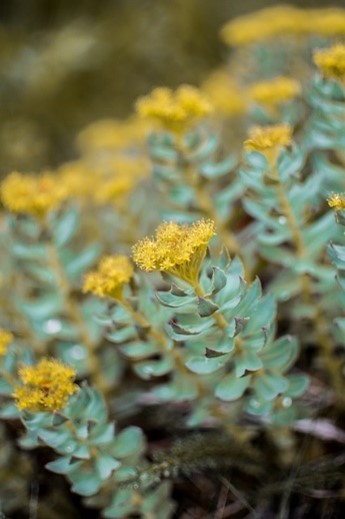Coming across a robust Rhodiola plant while hiking is always exciting. In the United States I’ve run across a few varieties. They are beautiful. At my South Dakota herb farm, we grew the official variety Rhodiola rosea. Every year it would get a little bigger, with white flowers blooming early spring through mid-summer. After 5 years or so, the plant began sending runners for new plants. When the plants were 10 years old, I took my first harvest. It was a treat.
Then, this year in July, I came across a beautiful red-flowered variety growing on a rocky ledge in the high mountains of Colorado. Harvesting only pictures, I went back daily to commune with the plants, finding their physical presence as stress relieving and stabilizing energetically as the prepared medicine.
Family – Crassulaceae
Common Names
Sometimes called Rose root because strong rose-like smell of the roots, Rhodiola is also called Golden root and Arctic root.
About Rhodiola rosea
Rhodiola rosea (the official medicinal variety) is one of over 100 different species, many possessing its prized medicinal properties. The plant itself is rather small, growing only from about 8 to 12 inches tall. It is a flowering perennial found in the colder, northern areas of the world, where it grows prolifically. Most of the botanical research and historical uses for the plant come from Russia, Siberia, Tibet, Scandinavia, and Iceland, where it has been used for centuries.
Historically Rhodiola root has been used to nourish lung tissue, prevent and treat colds and flus, lower fevers and to treat lung problems like coughing blood and pneumonia. Further, it was used to improve circulation, and enhance energy. The Vikings used it to enhance their physical and mental endurance, a use shared throughout history by warriors and athletes. In 77 CE, Dioscorides, a famous Greek herbalist, wrote about varieties found in Alps, which he used to treat hernias, vaginal discharge (leucorrhea,) dysentery, hysteria and headaches. Young couples in Siberia were given bouquets of the root on their wedding night to enhance fertility.
Description
Rhodiola rosea is a perennial, dioecious plant, meaning that there are separate male and female plants. Perennial herbs are those that come back from the same roots year after year.
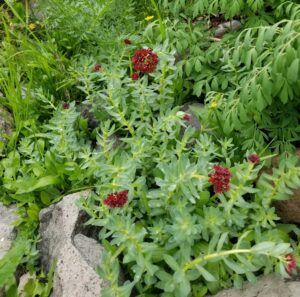
Several succulent, or fleshy, stems grow from between 2 to 15 inches tall from a single short scaly rootstalk. Small, beautiful red to white or yellow flowers top each stalk beginning in early spring and continuing into the summer.
Part used
Roots are gathered in late summer or fall after flowering and before the plant dies back. Harvest only 4-year old plants or older for the active products.
The best rule of thumb is to harvest small amounts of large plants from a large population.
Medicinal Actions
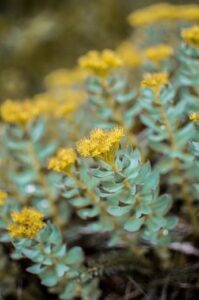
This plant acts as an adaptogen, enhancing the body and mind’s resistance to stress. It is a nervous system stimulant, antioxidant, cardio-protective, anti-depressant, and anti-viral, that the stimulates immune system. It is intensely astringent. Rhodiola acts as a rejuvenator for mind, to enhance cognitive performance, and improves mood and concentration while it increases physical and mental energy.
Energetics
Cold, dry, highly astringent, stimulating, aromatic, and slightly bitter
Medicinal use of Rhodiola
Rhodiola is primarily used as an adaptogen to help the body and mind deal with stress, and as a nervous system stimulant and an astringent. The plant is especially indicated in situations where tissue is presenting as lax (overly relaxed,) swollen, inflamed or prolapsed. It is also useful when working with congested, “stuck” or stagnant problems, whether the symptoms involved are digestive, respiratory, mental, or emotional.
Stress and the Body
Unfortunately, stress is epidemic in dominant cultures of our world. Stress does all kinds of crazy things to the human organism, body, mind, and emotions. It seems like almost everyone is working hard to do the “right” thing in the “right” way. As a people and as individuals, we are always striving to do, be and have more and to live up to expectations placed on us by society and the culture at large. It’s so prevalent, that I would say, most of the population doesn’t know what it means to relax, let alone what it feels like to be in the relaxation or autonomic nervous response.
Our bodies are made to deal with stressful situations; it’s hardwired into our physiology as a survival mechanism. You know the drill, the lion attacks and we fight, run or freeze. When the crisis is over, our system returns to normal, and we go about our lives once the adrenaline is processed from our system.
Chronic, long-term stress, however, is different and is often more damaging. This can be a low-level kind of stress that doesn’t go away, like the stress of a demanding boss, living with an alcoholic or even having a chronic illness. In these kinds of situations, our stress meter is stuck on. We are always in the sympathetic nervous response, always ready to fight, run or hide, even when we don’t recognize it.
Unfortunately, our bodies can’t usually tell the difference between an emergency or crisis and a situation we must live with, and the adrenaline doesn’t process out of our system; it builds up instead. When this happens, all sorts of physical and emotional problems can develop including, high blood pressure, cancer, anxiety, depression, muscular aches and pains, digestive upset and much more.
Rhodiola helps Moderate the Stress Response.
Lucky for us, Rhodiola (and other herbs known collectively as adaptogens) have been shown in studies to strengthen the HPA axis. The hypothalamic-pituitary-adrenal axis controls our reactions to stress and regulates various body processes like digestion, hormonal response, the immune system, mood and sexuality, and energy usage.
Rhodiola has been shown to reduce production of the stress hormone cortisol, while at the same time, increasing serotonin, dopamine, and norepinephrine. Serotonin helps us feel happier, calmer, and more focused. Dopamine improves motivation, the feeling of accomplishment, and productivity. Serotonin and dopamine both play a role in regulating digestion and helping regulate our appetite according to our body’s needs.
All this means is that Rhodiola helps mediate the stress response and all its side effects. That’s one reason why it works for so many things. Stress builds up in the body and mind and causes all sorts of weird things to happen, which is another good reason to look beyond the symptoms to understand the causes for ill health and dis-ease.
Physical Stress and Endurance
All sorts of physical stress can be helped by Rholdiola. Athletes and warriors have been using this herb for hundreds of years to increase physical endurance, shorten recovery time and accelerate healing after physical exertion, training, or injury. The herb can increase pain tolerance, relieve fatigue, protect us from the effects of extreme temperatures (like heat exhaustion) and protect us from the oxidizing effects of UV light.
Rhodiola is a Nervous System Stimulant
Although all nervines help protect and nourish the nervous system, not all are relaxant. Some, like Rhodiola, Coffee and Ginkgo biloba (to name a few) are stimulant nervines. These kinds of nervines are best used by those who never had enough energy to begin with. These people are tired from the get-go. These folks are dealing with a lot of inertia are stuck or feel stuck such as with depression, Rhodiola can prove helpful. But be sure to look for the cause before suggesting the solution.
A nervine stimulant, like Rhodiola can be helpful, short-term, when you are tired but have a deadline. For example, this herb could prove invaluable helping a new mother to keep up with the demands of a new infant and for warding off postpartum depression. It could also prove useful for a grad student working to finish school or for the entrepreneur starting a new business while keeping up with the demands of a family. These kinds of cases all have an end in sight. In cases like this, Rhodiola helps reduce exhaustion, sharpens mental focus, increases endurance and work productivity. Wow, that sounds pretty good.
The trouble comes when a stimulant nervine, like Rhodiola, is used for long-term burn out. Long-term use by the overstressed and exhausted is only likely to worsen their exhaustion, depression, anxiety and other symptoms. Get some rest instead. Maybe enjoy a nice soothing lavender tea, with wild oats tea, which would be a better choice.
Cardiac Tonic
Several studies performed by the Soviets (now Russians) between 1967 and 2004 show Rhodiola may help prevent stress-induced cardiac activity, reducing adrenaline induced arrhythmias, and regulating both heart rate and blood pressure. The herb has also been shown to be useful when working with cardiac depression. It helps reduce triglyceride levels, and hyperlipidemia (cholesterol), lowering the blood pressure, and strengthening heart contractility.
Additional applications for Rhodiola
- Type 2 diabetes and metabolic syndrome – Shown to enable better insulin sensitivity and improve overall insulin utilization.
- Cancer – Globally inhibits the growth of malignant tumors and has shown anti-cancer activity for bladder and breast cancers and is an anti-proliferate for leukemia.
- Reproductive system tonic and rejuvenator – Enhances fertility in both males and females, improves male ED, increases sperm counts and is helpful for anemia in pregnancy.
Additionally, Rhodiola is used for a variety of symptoms and/or conditions, again most of which are related to stress to either the body, mind, or emotions. Some of these symptoms include fatigue, anemia, anxiety, depression, moodiness, hypoxia or oxygen deprivation, extreme temperature, and altitude sickness.
Preparation Methods & Dosage
Rhodiola extracts are available in capsule, tincture, dried root, and standardized extract. According to Donald Yance in his book, Adaptogens in Modern Herbalism, Russian grown and processed Rhodiola was shown to possess twice the active constituents as those grown in other regions including China and the US. He goes on the say that he believes the reasons for this difference are many and may include growing the plant in regions where it does not thrive, poor harvesting techniques and impatient in in harvesting and processing. All Good Rhodiola products should have the telltale rose scent.
Dosage Suggestions
- Capsule – 100 mg 1-4x per day
- Tincture – 4-8 ml per day
- Dried Root – 200 – 600 mg per day
- Standardized extract – 100 mg/day standardized extract
One large dose at breakfast is more effective than 2 or 3 smaller doses throughout the day.
Cautions and herbal drug interactions
- Can overstimulate those who are anxious and agitated.
- May interfere with sleep in sensitive individuals. Take early in the day if prone to insomnia.
- Avoid if bi-polar, manic or paranoid.
Drug Interactions
As an additional treatment in depression, Rhodiola was found to “increase mental and physical energy” and “improves mood and stress tolerance.” According to one study, combining Rhodiola with tricyclic antidepressants was associated with a reduction of antidepressant side effects, foremost among these was sedation, fatigue, and sexual dysfunction.
There are no interactions with blood thinning medication and is considered safe with Warfarin.
Recipe
Rhodi Rose Remedy from Katia LeMone (Midwife, Teacher and Friend)
To help build energy and create peace after childbirth and to help with sleep deprivation.
Combine equal parts of pre-prepared herbal tinctures
- Rhodiola
- Rose petal Elixir
Take 10 to 20 drops once or twice per day. If taking a second dose, take it before 4:00 pm.
Further Reading


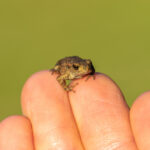
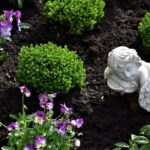
Astaxanthin and Lipothiamine – Memory Strengthening Strategies
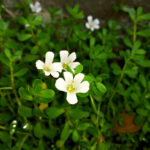
References
https://mhanational.org/rhodiola-rosea
https://www.mayoclinic.org/healthy-lifestyle/stress-management/in-depth/stress/art-20046037
https://www.neuroscientificallychallenged.com/blog/2014/5/31/what-is-the-hpa-axis
https://www.mayoclinic.org/healthy-lifestyle/stress-management/in-depth/stress/art-20046037
Mc Donald, Jim; Functional Herb Craft part 1. 2017
Roundtree, Robert ND; Herbs and Nutrients for Modulating Mood Disorders; Medicines of the Earth, herbal conference notes, 2004
Stanbury, Jillian ND; A Review of the Lesser Known Adaptogens; Southwest Conference for Botanical Medicine Conference notes, 2009
Winston, David and Maimes Steven; Adaptogen herbs for Strength Stamina and Stress Relief; Healing Arts Press, Rochester Vermont, 2007
Yance, Donald; Adaptogens in Medical Herbalism; Healing Arts Press, Rochester Vermont, 2013




Astaxanthin and Lipothiamine – Memory Strengthening Strategies

Disclaimer
The statements and ideas presented here are not intended to diagnose, treat, cure, or prevent any disease or condition. They have not been evaluated by the FDA. All ideas presented are for the sole purpose of education. To help you take control of your own health. If you have a health concern or condition, consult a physician. We suggest that you always consult a medical doctor before modifying your diet, using any new product, drug, supplement, or doing any new exercises.
These statements and products have not been evaluated by the FDA. They are not intended to diagnose, treat, cure, or prevent any disease or condition. If you have a health concern or condition, consult a physician. Always consult a medical doctor before modifying your diet, using any new product, drug, supplement, or doing any new exercises.
Herbs taken for health purposes should be treated with the same care as medicine. Herbal remedies are no substitute for a healthy diet and lifestyle. If you are serious about good health, you’ll want to combine diet, exercise, herbals, a good relationship with your doctor and a generally healthy lifestyle. No one of these will do it alone.
This information is designed to be used as part of a complete health plan. No products are intended to replace your doctor’s care, or to supersede any of his/her advice or prescriptions.

